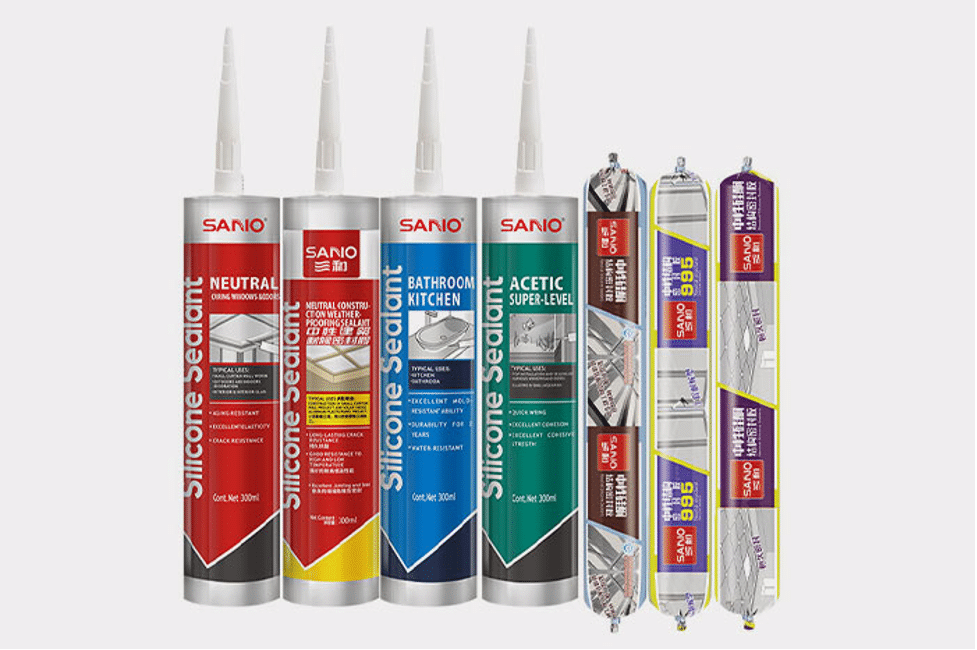Industries use sealants’ durable, flexible barriers to moisture, chemicals, and temperatures. Sealants absorb stress without loosening joints and seams in construction and automotive uses. Polyurethane and silicone sealants are famous for their qualities. Because of their adherence and flexibility, polyurethane sealants suit load-bearing applications. Silicone sealants can tolerate temperatures and UV exposure for outdoor use. The decision between polyurethane sealant vs. silicone sealant depends on environmental exposure, material compatibility, and project needs.
Understanding Polyurethane Sealant vs. Silicone Sealant
Different chemicals and bonding properties separate polyurethane and silicone sealants. Organic polyurethane sealant cures by a moisture-driven chemical process for a strong, flexible bond between concrete and metal, which are prone to vibration and stress. It has abrasion resistance and is preferred for structural joints and outdoor applications needing impact and wear resistance.
On the other hand, silicone sealant is derived from inorganic siloxane polymers, which are more stable under UV exposure and temperatures. It prevents degradation in thermal expansion applications, including glazing and high-temperature settings. Nonetheless, silicone lacks polyurethane’s adhesive strength on porous substrates. It is appropriate for glass, ceramic, and non-porous materials. That’s where flexibility over bonding strength is prioritized.
The decision regarding “polyurethane sealant vs. silicone sealant” relies on needs: polyurethane’s strong adherence to stressed joints vs. silicone’s resilience in temperature-sensitive situations.
Key Differences between Polyurethane and Silicone Sealants
Elasticity
Polyurethane sealants are elastic but may harden owing to moisture exposure, limiting their flexibility over time. At the same time, silicone sealants keep consistent elasticity across a temperature range under UV and ozone exposure. It renders silicone more suitable for high-movement joints since its elasticity doesn’t degrade like polyurethane. For “polyurethane sealant vs. silicone sealant,” silicone suits settings where joint movement continues over many years.
Durability and Lifespan
Polyurethane sealants last 5-10 years outdoors and deteriorate faster under UV light. Conversely, silicone sealants resist UV deterioration and last 20 years or more in outdoor applications. Additionally, silicone withstands varying temperatures better to preserve its structure and performance in exciting environments. Henceforth, in “polyurethane sealant vs. silicone sealant” comparisons, silicone dominates durability for outdoor and high-temperature uses.
Adhesion
Polyurethane sealants adhere to concrete and metals thanks to their reactive chemistry. While adhering well to non-porous glass and glazed tiles, silicone can struggle with porous surfaces without primers. Polyurethane’s adhesion to porous materials is more fortunate in construction joints with concrete and wood. Glazing and sanitation benefit from silicone’s selective adherence.
Resistance
Silicone sealants resist moisture, mildew, UV radiation, and temperature changes better. Nevertheless, polyurethane sealants are great for heavy-duty construction abrasion and impact resistance. Yet, polyurethane can break down when exposed to chemicals. Silicone keeps structural integrity across chemical exposures for chemical exposure and moisture applications.

Best Uses of Polyurethane Sealant vs. Silicone Sealant
Polyurethane Sealant Applications
- Heavy-duty bonding and sealing in construction.
- Expansion joint sealing in concrete structures.
- Roofing applications for waterproofing.
- Window and door frame installation.
- Sealing gaps in metal and wood structures.
- Sealing outdoor furniture and equipment.
- Sealing in automotive and marine applications.
- Floor and pavement joints.
Silicone Sealant Applications
- Sealing glass and aluminum in windows.
- Bathroom and kitchen applications (e.g., sinks, showers).
- Waterproofing in plumbing applications.
- Electrical insulation in electronic components.
- Caulking around tiles and countertops.
- Sealing aquariums and glass structures.
- Sealing metal, ceramic, and plastic materials.
- High-temperature resistance applications.
Recommendation of SANVO’s Silicone Sealants
SANVO’s silicone sealant for high-stress construction and industrial situations is flexible and adheres to cement and stone without bubbling while curing. Owing to the low modulus silicone, it can endure joint movement in dynamic conditions. For example, Silicone Sealant TB798 has a tack-free period of 12 minutes at 23°C and 50% relative humidity for speedier handling. SANVO silicone sealer keeps its integrity and weather resistance longer than polyurethane sealant, which shrinks or discolors.

Some Essential Tips
How to Remove Old Silicone Sealant?
To remove old silicone sealant, start with a utility knife or a sealant removal tool to slice through thick layers. Keeping the blade flat against surfaces to prevent scratching. Once the bulk is removed, apply a commercial silicone remover so it penetrates for the recommended time (15-30 minutes). Then, use a plastic scraper to lift off the softened residue. For stubborn bits, rubbing alcohol or isopropyl alcohol breaks down the silicone polymers further. Finally, wipe down the area so it’s free of any remaining sealant oils or residues; these can affect new sealant adhesion.
How to Apply Silicone Sealant Neatly?
For a clean line, mask off both sides of the joint with painter’s tape to expose only the gap. Then, cut the silicone tube nozzle at a 45-degree angle while adjusting the opening size according to the gap width (smaller for thin lines, larger for wider gaps). Apply steady pressure, move slowly, and squeeze a consistent bead. After application, use a caulking tool or a gloved finger plunged in soapy water to smooth the bead. Press lightly to push silicone into the joint and create a finish. Lastly, remove the tape before the sealant begins to skin over for crisp, professional edges.
Conclusion
For demanding industrial applications, SANVO offers silicone sealing solutions. Their silicone sealants’ mechanical and chemical resilience are ideal for structural bonding under stress. Due to their thermal endurance, their silicone high-heat sealants suit construction applications with considerable temperature changes. Each sealant type fulfills real-world performance standards with our wide selection of adhesive options and accurate specs.
